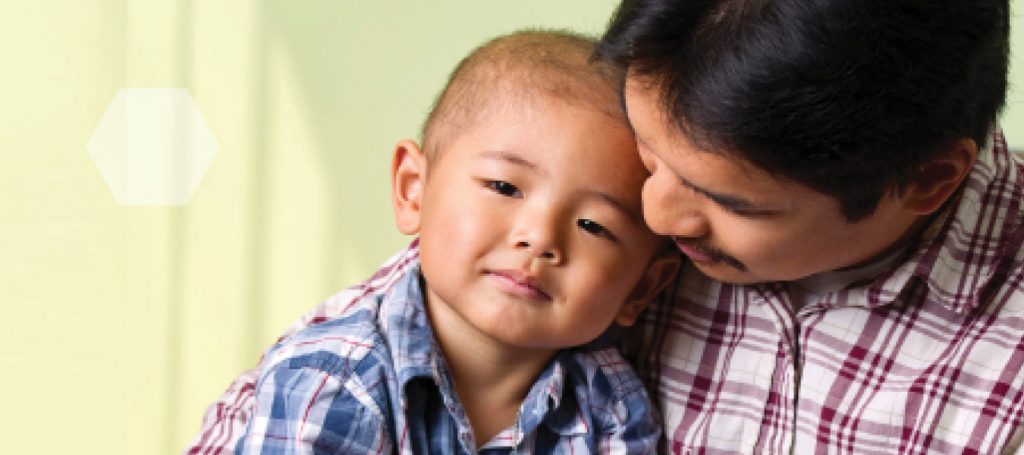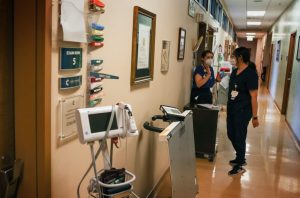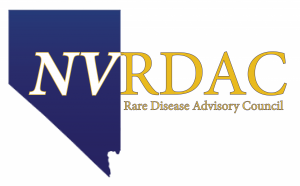Key Takeaways:
- Childhood cancer typically results from random genetic mutations that occur during rapid cell growth and development, not from lifestyle or environmental factors.
- Most childhood cancers cannot be prevented, and they’re not caused by anything parents did or didn’t do.
- Genetic changes in childhood cancer are usually acquired, not inherited—less than 10% of childhood cancers are linked to inherited genetic mutations.
- Children’s cancers differ fundamentally from adult cancers, as they develop in different cell types and respond differently to treatment.
- Research is advancing our understanding of childhood cancer causes, leading to better treatments and improved survival rates.
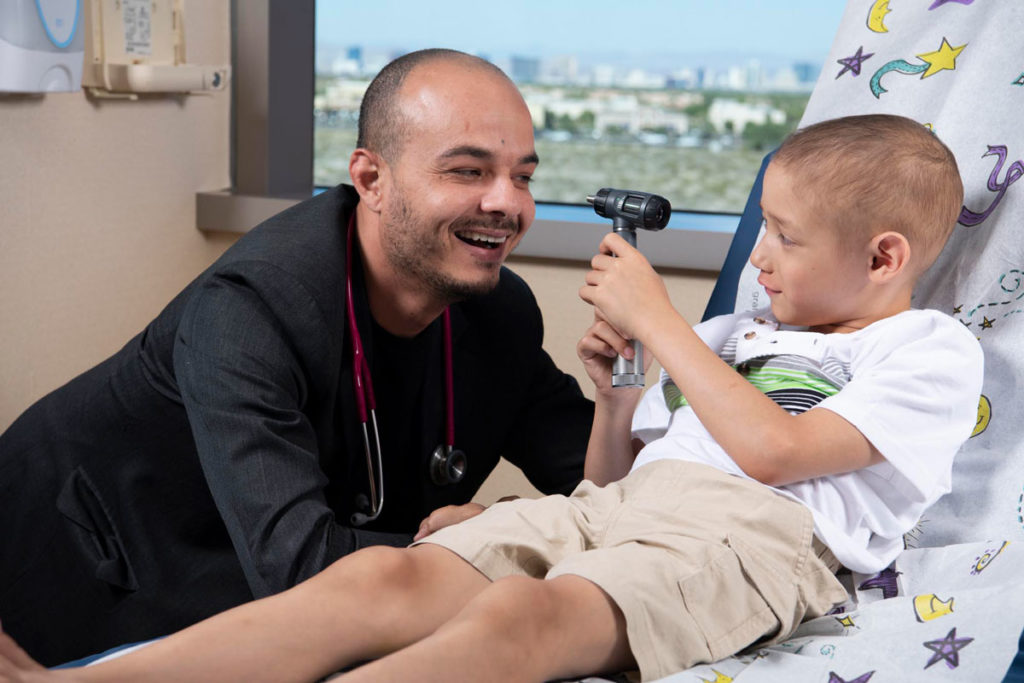
When a child is diagnosed with cancer, one of the first questions families ask is “Why?” It’s a natural response to a devastating diagnosis. Understanding why children get cancer can help families process this difficult reality.
Here’s the most straightforward answer: Most childhood cancers develop because of random, unpredictable changes in the DNA of growing cells. Unlike many adult cancers, which often result from years of environmental exposure or lifestyle factors, childhood cancers typically arise from genetic mutations that occur spontaneously during the body’s rapid growth and development.
This article shares what decades of research tell us about childhood cancer causes—not to replace your child’s medical team, but to provide context for the journey ahead. Every child’s cancer is unique, and your oncology team will provide guidance specific to your child’s situation.
How Does Childhood Cancer Develop?
Every cell in the human body contains DNA, and DNA is like an instruction manual that tells cells how to grow, divide, and function. Occasionally, errors occur when cells copy this DNA during division. Think of these like typos a person might make when copying a book by hand. Researchers often use this comparison because it captures how copying errors naturally occurs even in carefully controlled processes. In children, whose cells are dividing rapidly to support growth, these copying errors can sometimes lead to cancer.
Most of the time, the body’s natural repair systems catch and fix these errors. However, when multiple specific mutations accumulate in the same cell over time, that cell can begin growing out of control—and cancer develops.
Here’s the scale we’re talking about: During normal human cell division, between 100,000 to 1,000,000 DNA replication errors can occur each time a cell divides. The body’s proofreading systems correct nearly all of them, leaving only about 1 error per 10 billion letters of genetic code as a permanent mutation.
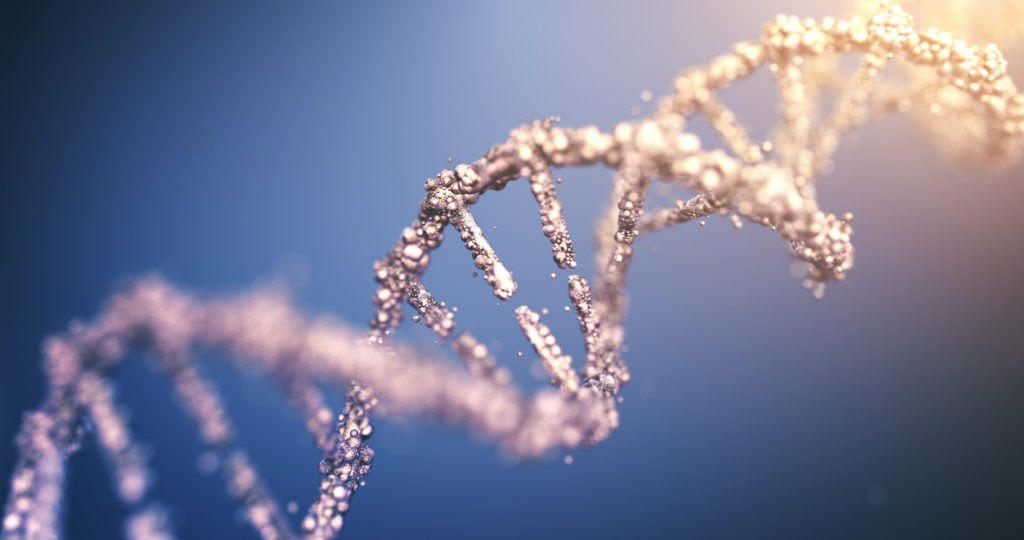
Of the mutations that do persist, research indicates that about 66% of cancer-driving mutations across all age groups are caused by these random, unavoidable copying errors—not by inherited genetics or environmental factors.
This is why childhood cancer feels so senseless: it’s not punishment, it’s not karma, it’s not something you caused. It’s the statistical reality of copying billions of letters of genetic code millions of times during the rapid growth of childhood.
This understanding changes nothing about your child’s diagnosis, but it can change everything about how you carry it. You didn’t cause this. Embrace that knowledge so you can be fully present for the journey ahead.
Why Childhood Cancer is Different from Adult Cancer
The vast majority of cancer occurs in older adults, with over 50% of all cancers affecting people ages 70 and older. In contrast, childhood cancer is relatively rare, affecting 1 in 264 children and adolescents before age 20, and it develops for fundamentally different reasons than most adult cancers. According to the World Health Organization: “Unlike cancer in adults, most childhood cancers do not have a known cause.”
Different Cancer Types
Children typically develop cancers in different parts of the body than adults. While adults commonly develop carcinomas (cancers in tissues that line organs), children more frequently develop:
- Leukemias (blood cancers)
- Brain and central nervous system tumors
- Lymphomas (lymphatic system cancers)
- Sarcomas (bone and soft tissue cancers)
- Neuroblastomas (nerve cell cancers)
For example, Wilms tumor is a type of cancer that affects the kidneys and is diagnosed on average in kids ages 3 to 4. It’s responsible for almost 5% of all childhood cancers and is specific to young children.
Different Causes
Adult cancers can develop after years or decades of exposure to risk factors like tobacco, alcohol, sun exposure, or poor diet. Childhood cancers don’t have time to develop this way—they emerge during the vulnerable period of rapid growth when cells are dividing frequently.
Different Response to Treatment
Because childhood cancers arise differently, they often respond better to treatment than adult cancers. According to the National Cancer Institute: “The cancer mortality rate—the number of deaths due to cancer per 100,000 people per year—among children and adolescents younger than 20 years declined by more than 50% from 1975 to 2022. It dropped from 5.1 per 100,000 children and adolescents in 1975 to 2.2 per 100,000 children and adolescents in 2022.”
While any cancer diagnosis is serious, children’s bodies are often more resilient and responsive to therapies, particularly when they are treated with pediatric treatment regimens.
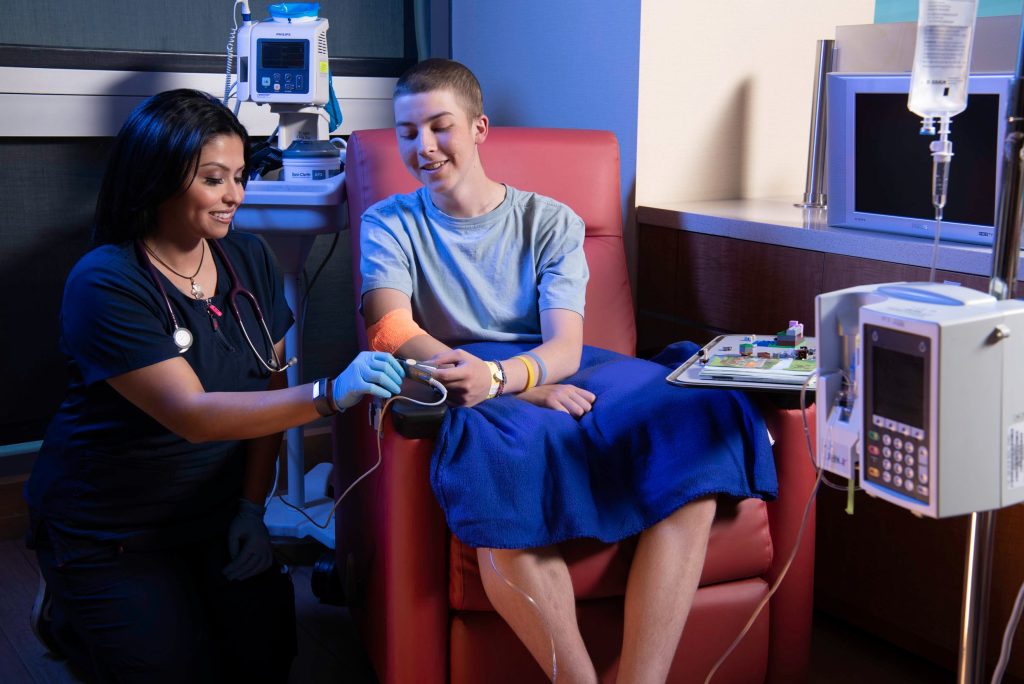
The Role of Genetics in Childhood Cancer
It’s crucial to understand the difference between:
Acquired genetic mutations: Genetic changes that occur randomly in a child’s cells after conception. These account for the vast majority of childhood cancers and are not passed down to future generations.
Inherited genetic mutations: Genetic changes passed down from parents that increase cancer risk. These are responsible for around 10% of childhood cancers.
Conditions That Increase Risk
Certain inherited conditions do increase a child’s risk of developing cancer, including:
- Li-Fraumeni syndrome
- Neurofibromatosis
- Down syndrome
- Beckwith-Wiedemann syndrome
- Fanconi anemia
However, even with these conditions, cancer is not guaranteed. Conditions like the above simply increase susceptibility.
Known Risk Factors for Childhood Cancer
Unlike adult cancers, very few external risk factors have been definitively linked to childhood cancer. Research has identified only a handful:
Radiation Exposure
High-dose radiation exposure is one of the few confirmed environmental risk factors. This includes:
- Previous radiation therapy for another cancer
- Exposure to environmental sources such as radon (common in basements) or building materials
- Exposure to atomic bomb radiation
- Certain high-dose medical imaging
Standard medical X-rays and CT scans use much lower doses, and their benefits typically outweigh potential risks. It is crucial to note that, as emphasized by the National Cancer Institute, that CT scans can provide life-saving information for diagnosing illnesses in children and the absolute cancer risks associated with CT scans are small. For every 10,000 children undergoing today’s typical CT exposure (~8 mGy), roughly 1 to 2 might develop a blood cancer due to that exposure over their lifetime.
And although radiation exposure can potentially cause childhood cancer, it’s more likely that exposure during childhood might increase a child’s risk of cancer much later in life.
Some Chemotherapy Drugs
Children who have received certain chemotherapy drugs for a previous cancer have a slightly increased risk of developing a second cancer later.
Weakened Immune System
Children with compromised immune systems—whether from inherited conditions, HIV, or immunosuppressive medications—face elevated cancer risk.

What Parents Cannot Control
This is perhaps the most important message for families: childhood cancer is almost never caused by anything parents did or didn’t do.
Decades of research has found no reliable connection between childhood cancer and:
- Diet during pregnancy or childhood
- Prenatal vitamins
- Living near power lines
- Cell phone use
- Household chemicals used normally
- Parenting practices
- Physical activity levels
“Our hope is that every family who walks through our doors feels certain of one thing: childhood cancer is never a parent’s fault. It’s not the result of anything they did or didn’t do. When families are freed from that painful question of ‘why,’ they can redirect their energy toward what truly helps—the care, comfort, and courage their child needs.”
Dr. Joseph Lasky, Medical Director at Cure 4 The Kids Foundation
The randomness of childhood cancer can feel unfair…because it is. While this lack of control is difficult to accept, it’s important for families to release any misplaced guilt and focus instead on supporting their child and one another.
The Importance of Ongoing Research for Childhood Cancer
While we’ve made tremendous progress in treating childhood cancer, understanding its causes remains crucial for:
- Developing better, more targeted therapies
- Identifying children at higher risk
- Potentially preventing some cases in the future
- Reducing late effects of treatment
Organizations like Cure 4 The Kids Foundation and Coalition Against Childhood Cancer (CAC2) support vital research that advances our knowledge of childhood cancer biology and supports the development of new, cutting-edge treatment approaches.
Pediatric cancer research is gaining momentum with historic federal support. In a major win for childhood cancer research, the Childhood Cancer Data Initiative (CCDI) recently saw its annual budget doubled from $50 million to $100 million. This significant funding increase will accelerate efforts to collect, analyze, and share crucial data about childhood cancers, helping researchers worldwide identify patterns, understand causes, and develop more effective treatments faster. Learn more about this landmark funding increase and what it means for families.
Hope in Numbers: Childhood Cancer Survival Rates Continue to Rise
Thanks to vigorous, ongoing research, survival rates for childhood cancer have improved dramatically in recent decades. Mortality rates in children have dropped by 70%, falling from 6.3 deaths per 100,000 to just 1.9 during 2020-2022. Adolescents have seen similar progress with a 63% decline, from 7.2 to 2.7 deaths per 100,000.
The most striking improvements have been in leukemia treatment, where death rates have plummeted by 83% for children and 73% for adolescents. Today, childhood acute lymphocytic leukemia—the most common childhood cancer—achieves remission in 90–100% of cases. Remarkably, these gains came largely from refining and optimizing existing chemotherapy approaches rather than discovering entirely new drugs.
It’s worth noting that while both age groups have benefited from treatment advances, younger children have experienced greater improvements than adolescents. This gap stems from several factors, including biological differences in how tumors behave at different ages, varying rates of clinical trial participation, differences in treatment approaches, and how well patients tolerate and follow treatment protocols.

Cure 4 The Kids Foundation: Nevada’s Only Childhood Cancer and Rare Disease Treatment Center
Since our founding in 2007, Cure 4 The Kids Foundation has operated on a pioneering hybrid model that combines world-class clinical excellence with the heart of philanthropy. This means families receive the rigorous, cutting-edge treatments found in the nation’s top medical centers alongside genuine compassion and support—with one unwavering promise: no child with cancer is ever turned away, regardless of a family’s ability to pay.
As you’ve learned in this article, childhood cancer research is complex and ongoing. Every treatment advancement and improved outcome is possible because of donors who believe in our mission. Your contribution helps us provide exceptional care regardless of financial circumstances, advance critical research into childhood cancer causes and cures, and ensure every child has access to hope and healing.

About the Author: Annette Logan-Parker brings over 30 years of experience in pediatric oncology to her role as Founder and Chief Advocacy & Innovation Officer at Cure 4 The Kids Foundation. She has dedicated her career to improving outcomes for children with cancer and ensuring equitable access to cutting-edge treatments for all families.

